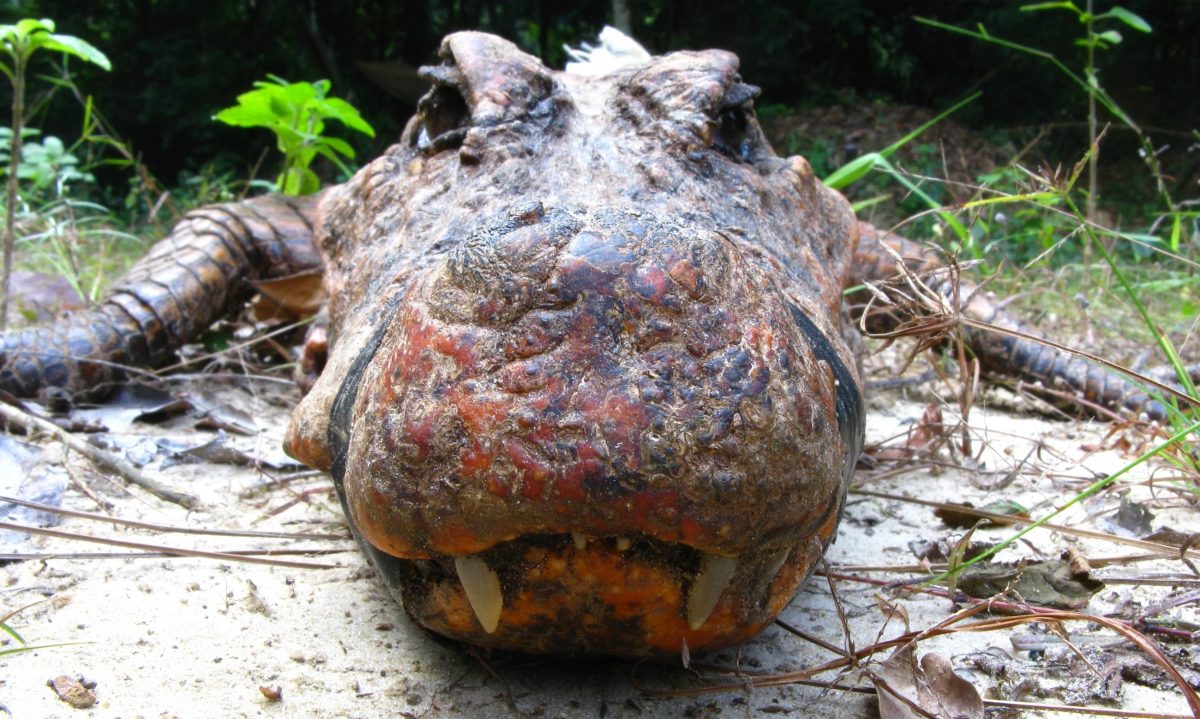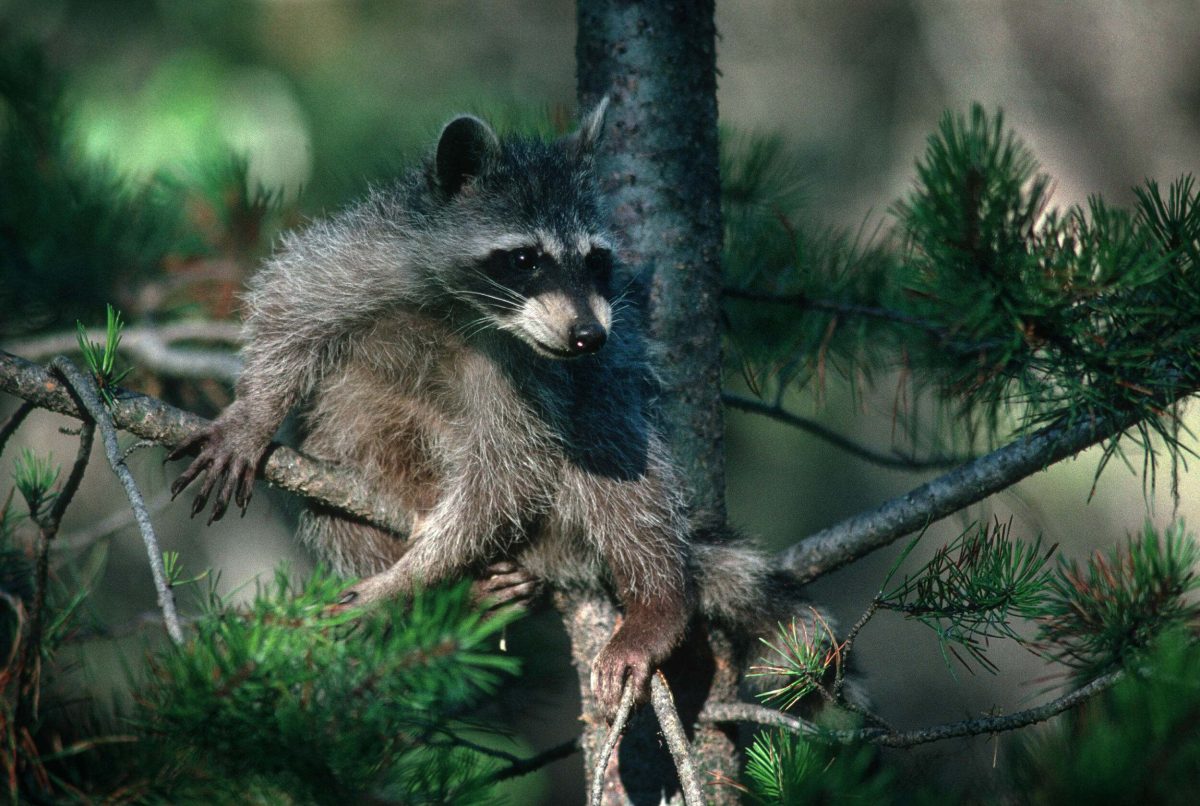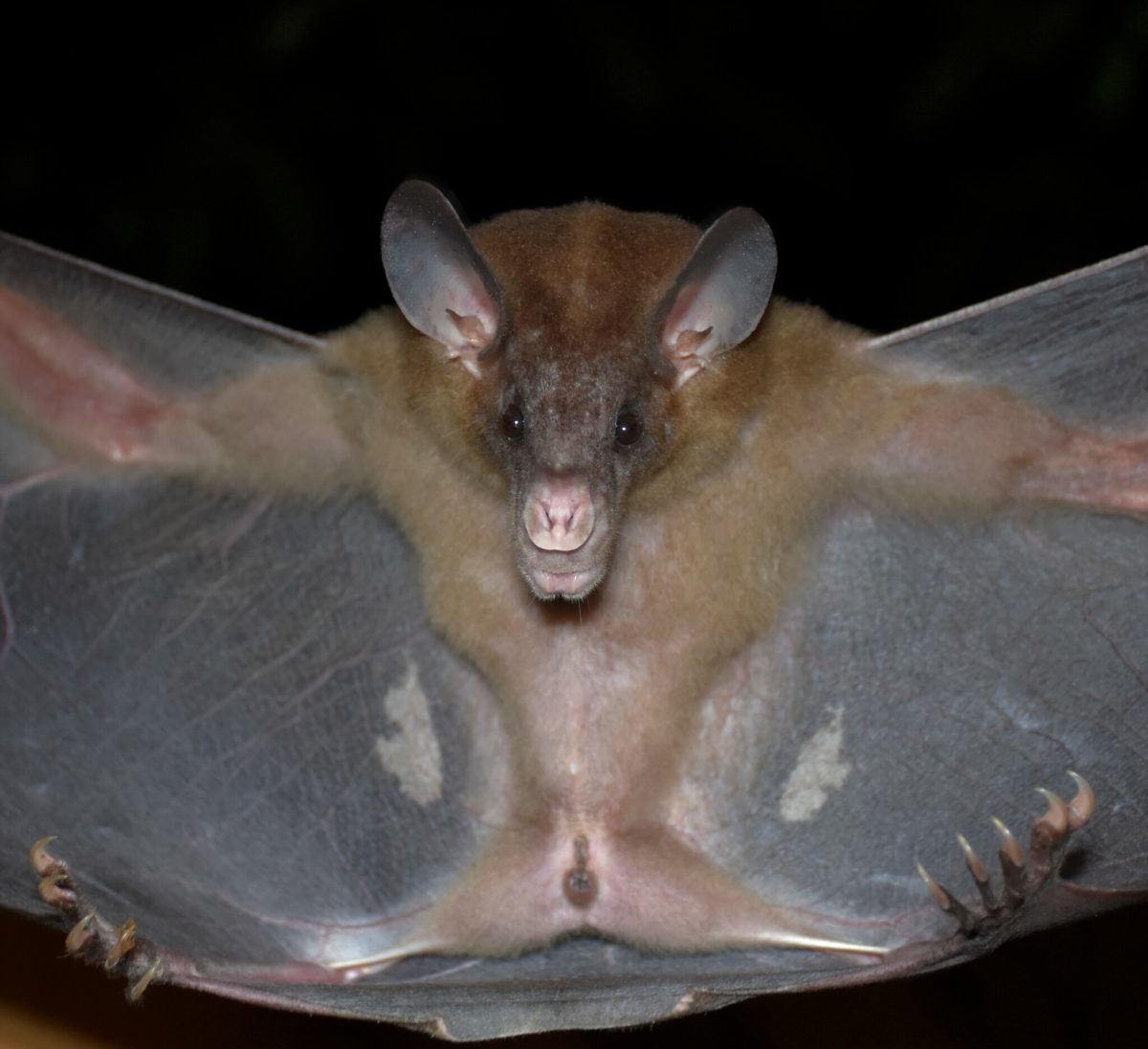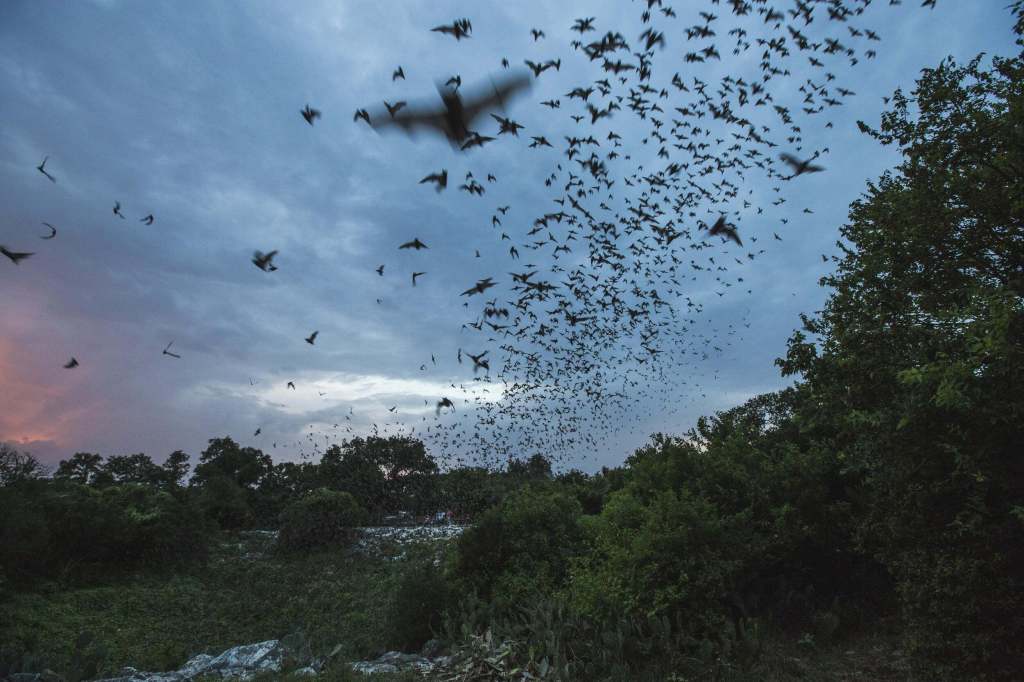I stretched out on the ground, my head resting on a nearby rock. Soon, bats began streaming out of the cave, flying right over my head. First, it was a bat here and there, followed by dozens.
Within 15 minutes, there were so many bats in the sky it looked like smoke.
I was visiting Frio Cave in the Texas Hill Country, one of several caves in the area where millions of Mexican free-tailed bats roost.
As I enjoyed the spectacle, my eye caught a larger flying creature on the edge of the bats. I raised binoculars: a red-tailed hawk. Soon I could see other raptors taking position.
Become a Member
Make a lasting impact for nature when you join The Nature Conservancy!
The bats were flying out to hunt insects across the Hill Country, performing a valuable ecological service. The hawks, in turn, showed up to hunt and eat the bats.
Wherever you find large concentrations of animals – the Serengeti’s wildebeest, Alaska’s salmon runs – you will find predators. And a nightly bat emergence represents predictable, abundant protein.
Many predators feed on bats. Often, it’s opportunistic. But sometimes the predator specializes in locally abundant bats.
From crocodiles swimming through bat guano sludge to snakes snatching bats from the air, here are some of the documented stories of bat predation.
Top 10 List
-
Crocodiles

The bat-eating, cave-dwelling dwarf crocodiles of Gabon’s Abanda caves have orange skin. ©Olivier Testa, CC BY-SA 3.0 , via Wikimedia Commons) Many bat species hunt insects over water; if they get too close to the surface, they could be gulped by a fish (more on this later) or a crocodile. In Australia, large flying foxes are occasionally nabbed out of the air by leaping freshwater crocodiles, a dramatic sight.
But perhaps the wildest bat predator of all is the African dwarf crocodile of Gabon’s Abanda cave system.
African dwarf crocodiles typically feed on fish and crustaceans. At the Abanda caves, they focus almost exclusively on bats and cave crickets. Huge numbers of bats exist in these caves, so their guano mixes with water below to become, as National Geographic puts it, “viscous pools of bat feces.” As the dwarf crocs hunt through this sludge – what one researcher dubbed a “bat guano slushie” – they stain themselves orange.
-
Raptors & Owls

The aptly named bat hawk. © Nik Borrow/flickr If you’ve ever watched a bat fly over a field, you know they are constantly dipping and diving. An individual bat presents a difficult target for a hawk. But thousands or millions of bats are an opportunity.
That’s why a number of raptor species hunt at the entrances to bat caves around the globe. At Texas caves like the one I visited, several raptor species regularly hunt bats, including red-tailed hawks, peregrine falcons and zone-tailed hawks.
The National Geographic documentary Hostile Planet captured footage of Swainson’s hawks plunging into emerging bat swarms in New Mexico.
But, Wait..What Happens When Bats Go From Prey to Predator?
Our friends at Bat Conservation International have the other side of the story. Trust us, there are some real zingers on the menu!
The aptly named bat hawk specializes in bats, using high speed to catch them in flight. Found in sub-Saharan Africa and South Asia, this bat has a limited time to hunt, as it mainly catches bats in the 30 minutes it takes them to emerge from caves. To maximize hunting time, its mouth opening (called a gape) is unusually large, allowing it to swallow prey whole while on the wing.
Many owl species are well known as nocturnal hunters, so they will hunt and eat bats. However, bats are targets of opportunity rather than a main food source. Tawny owls in Europe do target greater noctule bats, and one paper found that owl predation accounted for 30 to 40 percent of bat mortality in some colonies.
-
Snakes
Sure, a hawk hovering around a cave entrance is cool. Even cooler? Snakes hanging on the cave ceiling, snatching bats out of mid-air as they fly by. In South America, 20 species of snakes have been recorded hunting bats at cave entrances.
But the best-known incidence of snake predation on bats occurs at Bat Cleft Cave in Australia’s Mount Etna Caves National Park. Film crews for the series Planet Earth installed infrared cameras in the cave so as not to disturb the bats. As the bats emerge, the viewer sees snakes and large frogs feasting on bats. More than 100,000 little bent-wing bats emerge nightly, and it’s become a popular tourist activity to watch the emergence.
-
Gar

This bridge over Buffalo Bayou in Houston has a not-so-well-kept secret: bats roost beneath the span and are, apparently, occasionally gobbled up by opportunistic gar. © Corey Seeman/flickr Among my more unusual fishing lures (and I have way too many) is one that imitates a fluttering bat. Is this yet another instance of a lure that fools more anglers than fish? Probably. But I’ve always wanted to use this lure in an instance where fish are actively feeding on bats, where my lure “matches the hatch.”
Predatory fish species like largemouth bass, brown trout and northern pike would undoubtedly nab a bat that fell into the water. After all, these species will eat ducklings, rodents and baby songbirds. But I can find no documentation of any of these species actively targeting bats.
In Houston, I may have found my opportunity. On a podcast featuring my friend and gar expert Dr. Solomon David, researchers discuss gar swimming under bridges – where free-tailed bats roost – and picking off any of the mammals unfortunate to dip into the water. It’s something I just have to see for myself, as a naturalist and angler.
-
Raccoons

They may look cute and cuddly, but raccoons are formidable, omnivorous (and opportunistic) North American predators. © Janet Haas Raccoons will eat, well, just about anything. They’re the ultimate dumpster divers, to the point that urban raccoons are prone to obesity and high blood sugar levels. They are never one to pass up an abundant food source. Including bats.
White-nose syndrome is one of the wildlife horrors of our times, a fungal disease that weakens and kills bats in the caves where they hibernate. It’s a tragedy, but one that raccoons exploit.
In an article published in the journal Canadian Field-Naturalist, researchers found a cave in eastern Canada where raccoons consumed more than 3,000 dead and dying bats afflicted with white-nose syndrome. Since raccoons typically don’t disperse long distances, they are not likely to spread white-nose syndrome to new caves.
-
Cats
The domestic cat is a major conservation threat to songbirds, small rodents and reptiles around the globe. Free-roaming and feral cats kill billions of native animals annually. They also kill bats in surprising numbers.
In some areas, feral cats actively target bats, including in New Caledonia and Jamaica.
Bat Conservation International notes that researchers have observed cats actively hunting bats in Jamaica: “Cats wait at the entrances of this Caribbean island’s caves, and they snag bats as they fly out for their night’s foraging. Pregnant females and juveniles offer the easiest prey.”
But free-roaming cats pose a threat to bats wherever they are found. As BCI puts it, “Cats and bats don’t mix. Period.”
Keep your cat indoors. It’s one of the best things you can do to save the local wildlife.
-
Spiders
This may seem made for Halloween, but it turns out that spiders are very effective bat predators. Yes, spiders mainly catch invertebrates in their webs, but larger species will also catch birds, frogs, fish…and bats. A research survey published in the journal PLOS ONE found that incidents of bat-eating spiders are much more common than previously thought, especially in the Neotropics.
To withstand a struggling bat, these webs have to be strong. Live Science notes that one of the most effective bat catchers, the giant orb weaver, uses a web nearly 5 feet wide to catch bats.
-
Other Bats

Spectral bats are excellent hunters. © Jorge Brito/inaturalist Finally, at times, bats eat other bats.
Conservationists rightly celebrate bats for the ecological role they play in controlling insect populations, including mosquitoes and crop pests. But there are nearly 1,500 bat species that exhibit a variety of feeding behaviors. There are bats that eat fruit and bats that eat fish. Only 9 known species are strictly carnivores.
These bats often prey on birds and small rodents. But most won’t pass up a smaller bat species.
The spectral bat, found from Mexico to northern South America, hunts birds (sometimes quite-large birds like parrots). When a spectral bat encounters prey, it swoops in and envelops the bird in its wings.
It will also hunt bats. According to National Geographic, smaller bat species alter their behavior in areas where spectral bats are found. The false woolly vampire bat typically nests in hollow trees. So does the spectral bat. So in areas where the spectral bat is found, the false wooly vampire changes to nesting in ruins and caves.
The spectral bat is apparently attracted to distress calls of smaller bats and has been observed eating small bats caught in the mist nets set by researchers. It can be rough living in a bat-eat-bat world.




Great article. Let us know if you catch a fish on your bat lure.
The cave dwelling dwarf crocodile was a surprise bat predator I had not read about. No surprise are cats. We have had only indoor cats for years now but we had a male Siamese in Twin Falls that brought home a wide variety of winged prey including butterflies, pheasants and a wide range of other birds and yes bats were frequently on his agenda.
Loved this report! Thank you for including all that amazing video footage, especially the snakes in caves and the bat-eating orb weavers! We’re trying to do our part to help conserve bat species in north Coastal California. We located a bat expert /bat box maker who installed a duo bat box on on our property. One side is painted black, the other brown, so that the bats will have a choice of slight temperature differences. We put up the bat houses because we found Myotis species hanging out in our sun umbrellas and wanted to give them a better option.
This is a great article! I learned I didn’t know much about bats. Thank you for the educational opportunity to increase my knowledge.
Thank you!
I very much enjoyed reading your article on bats. Bats have always seemed special to me. I think I feel this way because my mom used to keep binoculars on our back porch window sill so we could identify birds – but we also were able to see the bats flying around in the early evenings. In fact, in Austin, Texas, people line up in the early evenings to watch them as leave their caves.
Also, I live in Ecuador where we have vampire bats, and they often carry rabies. So, we hang Christmas lights year round to keep them away.
Once again, I hope I find more information from your “bat love’.
In peace and gratitude,
Susan Fitch
Vilcabamba, Ecuador
Fascinating! I have my favorite bat Halloween photo, taken in my back yard in Hong Kong of a Giant Golden Orbweaver clutching a bat. Given it’s already mid-October. I’d upload for you it if I could, but seems not allowed.
This is extremely informative with a few surprises and now I must forward this article to my DIL so she can show my grandson who is obsessed with bats. Thanks for this well written peice
Great column Matt!